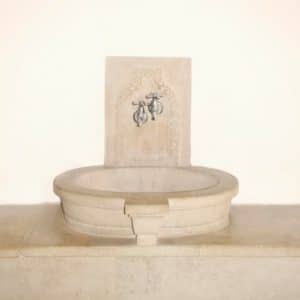Indoor plumbing has always been a necessity rather than a luxury because human beings must stay clean and drink fresh water in order to stay healthy.
Evidence of the installation of early indoor plumbing dates back to 4,000 BC in the form of clay-and-straw pipes that were unearthed by archaeologists near the Indus River Valley.
Before that, fresh water was generally carried in pots from lakes or river sources for use and wastewater was carted out the same way. Slaves bathed in natural running right at the side of a river or lake, while their masters bathed in heated water in tubs.
The Lost Innovations of Roman and Egyptian Plumbing

It was assumed that those in the afterlife would make full use of the facilities. As is true of most societies back then, it was only royalty or the wealthy that had indoor plumbing.
The ancient Romans brought water to everyone by laying down 220 miles of pipes and perfected the construction of irrigation and sewage systems. Water was directed to indoor faucets and decorative fountains in central courtyards. By 52 AD, Roman plumbing innovations were considered to be the state of the art in the ancient world.
Unfortunately, after the fall of the Roman Empire in 376 A.D., this engineering genius was lost and the entire world regressed back to using pails and chamber pots. Four centuries with no plumbing led to body odor and disease. This was true even in the most luxurious palaces of the world and in fact, the French Queen Marie Antoinette, who lived in the Palace of Versailles in the 1600s, invented a floral perfume to cover up the stench of body odors wafting through her court.
The Flush Toilet and Other Modern Plumbing Advances

Once pipes were installed in English houses enabling proper flushing, the indoor shower was also introduced, as a closed system that recycled used water through pipes.
By the 1830s, American hotels were outfitted with the first toilets and showers, and in 1833, a toilet and shower was installed on the second floor of the White House. In 1891, Thomas Crapper updated toilet design to include an elevated tank with valves and siphons.
You can still buy elevated tank style toilets from suppliers who specialize in retro bathroom fixtures to suit an older house. It wasn’t until 1919 that the floor-mounted toilet tanks that are still in use today came into common use.
If you live in the Salt Lake City, UT, you are privileged to be living in an advanced contemporary society with many retrofitted buildings that boast such modern, eco-friendly conveniences as water-efficient toilets, low flow faucets and powerful irrigation systems for your garden. Some buildings even have the capacity to heat their buildings using water from surrounding sewers.
Things are no different today than they were in ancient times, with the primary, emphasis being on efficiency, maintaining sanitary conditions and always having fresh running water to bathe in and drink.

